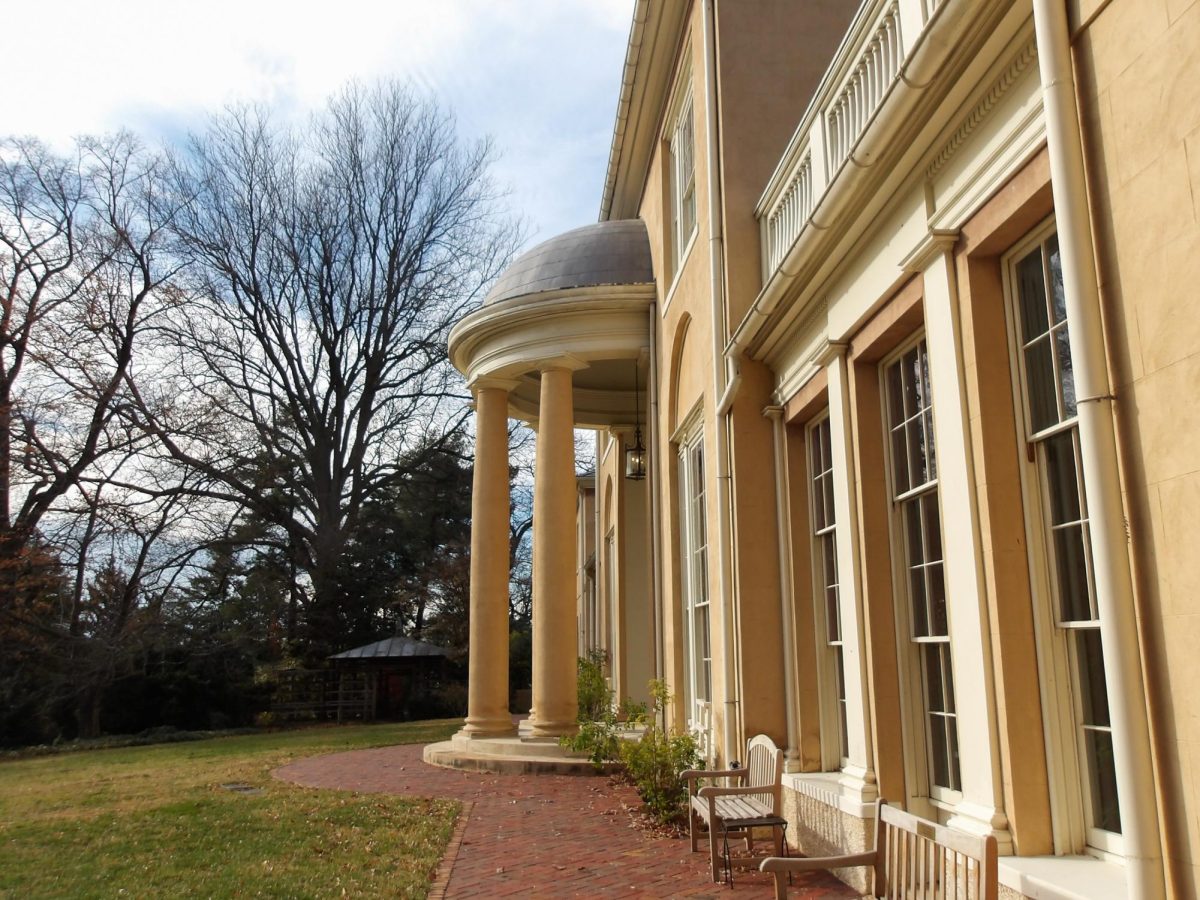Nine inoperative call boxes will be getting a makeover within the next year.
The defunct communication devices number in the hundreds around the District and were formerly used to call fire and police services from any location in the city. But now, local artist and former adjunct professor Charles Bergen is refurbishing the fixtures around downtown D.C. sidewalks to commemorate prominent women in D.C. history like former Washington Post publisher Katharine Graham and civil rights activist Mary Church Terrell.
Each proposed street sculpture will frame a bronze cast portrait of a woman, with an aluminum symbol of each woman atop their respective call box.
“It’s important to show that history is not just the history of men or just the elites,” Bergen said. “They’re women and a cross section of the population.”
The D.C. local also has a connection to GW as he spent summers taking classes at the Corcoran School of the Arts and Design in his youth before more recently taking evening classes at Corcoran until 2016. Bergen also taught a sustainability course at the school in the fall 2016 semester.
The call box project attempts to provide visible public art that memorializes contemporary women, Bergen said.
“There are a number of women in the portraits who worked to change, to get voting rights for women, civil rights entitlements for African Americans and who also broke cultural and business barriers,” he said. “We wanted to celebrate the lives of women. We thought that was important in this day and age.”
Bergen said the inspiration behind shifting some of the nearly 875 call boxes around D.C. into art is not novel. He said the call boxes’ ubiquity and close connection to D.C. history makes them a perfect canvas for local beautification efforts.
“They’re a really neat way to create public art because the base, or stand, for the public art is already there,” he said. “You can make the call box itself part of the art.”
Bergen redesigned six call boxes on a stretch of Rhode Island Avenue NE last year. When the same opportunity emerged in June with a theme to honor women this time, he jumped at the opportunity.
“I knew the ins and the outs of how to put art on them and make them into art,” Bergen said.
Each woman’s call box is set relative to where her historical legacy took place, like near her house, workplace or site of a significant event in her life. Eight women are already chosen, like suffragists Alice Paul and Josephine Butler. Elizabeth Schuyler Hamilton, who reemerged in pop culture from the musical “Hamilton,” was announced as the final call box honoree.
The project, which will be completed next year, has gotten underway with the details of each portrait sketched out on Bergen’s website.
Bergen collaborated with Mara Cherkasky, a historian and one of the founding members of the urban historical firm Prologue DC, who led the effort in selecting the nine women to be portrayed for the project.
Cherkasky said she wanted to get involved because of her expertise in women’s history and the lack of memorials commemorating contemporary women throughout the city.
“I already had the knowledge I needed to come up with nine women, and before that I came up with the idea that we should put women in the call boxes, since I knew that almost no outdoor sculpture in the city depicts a real woman,” she said. “The opportunity arose for me to possibly get the numbers up, and Charles jumped on it.”
This isn’t the first project Bergen has taken on that puts his art at the center of public life. Over the past six years, he has tackled projects including the diagonal crosswalk of a dragon in Chinatown between Seventh and H streets, and has enjoyed watching passersby check out public art.
“People going about their day-to-day routines, like lawyers and reporters and lobbyists, people who work in restaurants and nightclubs,” he said. “Everyone will see the art.”





